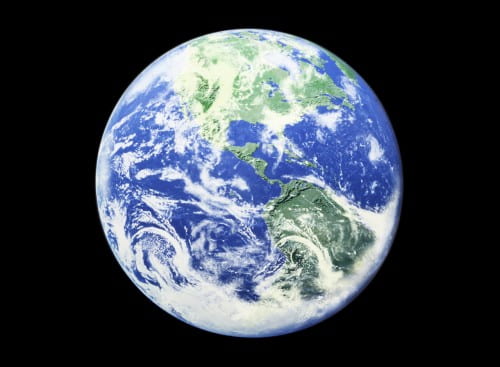 Published on Greenbiz.com, 8/1/2013
Published on Greenbiz.com, 8/1/2013
By Georges Dyer
“Something’s brewing on college campuses that soon may affect corproate sustainability professionals in all industries.
“During the past year, a groundswell of action demanding that college and universtiy endowments sell their holdings in fossil fuel companies has brought environment, social and governance (ESG) issues to the fore. Driven in part by 350.org, the fossil fuel divestment movement has sprung up on more than 300 campuses and is spraeding to cities, faith organizations and beyond.
The latestes news: Sterling College – a small, private liberal arts college in Vermont – has completed its divestment from the fossil fuel industry. While Steriling is small, with only about 100 students and an endowment of approximately $1 million, it provides more evidence that divestment is pssible and relatively straightforward.
Do your homework
Common initial concerns about divestment include that it is costly, complicated and requires investors to sacrifice returns. To divest, Sterling College chose a fossil-free option that Trillium Asset Management has offered clients for over a decade. ‘Those who say divestment is not possible haven’t done thier homework,’ said Matt Patsky, CEO of Trillium.
Trillium’s fossil free option replaces screened companies with similar investment characteristics (e.g. similar beta and return on equity). The result is a fossil-free option that doesn’t sacrifice returns. Recent reports from Impax Asset Management, MSCI and Aperio Group support the claimt hat removing fossil fule investments from portfolios has a negligible impact.
Sterling is one of just six colleges to commit to divestment to date, along with Hampshire, Unity, Green Mountain, San Francisco State and College of the Atlantic. But many others are considering it.
Divestment highlights the moral hazard of our fossil fule based economy for institutions that understand the devestating implications of climate change, yet support fossil fuel production as shareholders. This is a particularly difficult challenge for college and university endowments, designed to benefit institutions and students over the long term, in perpetuity. How is it justifiable to risk the fundamental resilience of our society from climate change impacts in the name of potentially higher financial returns? (Particularly when the data suggest those higher returns are negligible, if they exist at all.)
A moral paradox
Divestment proponents recognize the fossil fuel companies are unlikely to stop mining and drilling because soem investors sold their shares – others will buy them. But the movement highlights this moral paradox. And even if no other schools divest, it has sparked conversations on campuses across the country about a range of other ESG investment strategies.
And this could have dramatic implications across all industries – not just the fossil fuel companies. Every company currently has some responsibility, in one way or another, for greenhouse gas emissions and a wide range of other sustainability challenges such as water use, toxic chemicals, and labor and human rights issues. But those that are proactively implementing strategies that help move society towards sustainability can avoid risks and seize opportunities for innovation, attracting top talent and enhancing shareholder value.
Increasingly, investors seek out companies creating sustainability solutions or driving best practices in social, environmental and governance realms.
‘More and more companies have been embracing the idea that sustainability principles are good for business and shareholders over time. WE’ve seen tremendous growth in this space.’ said Trillium’s Patsky. ‘The more they see interest from the investor, the more they will do about it.’
Companies that don’t make the cut from an ESG perspective risk limiting their pool of potential investors. Fewer buyers and more sellers can hurt stock performance, a key driver (for better or worse) of corporate decision-making. Investors influence corporate executives and directors.
There are many ways investor scrutiny on ESG issues can influence corporate sustainability practices, such as:
*ESG investors look to sustainability indices, such as the Dow Jones Sustainability Indices and MSCI’s ESG Indices, to benchmark and inform investment decision-making.
*As more asset managers incorporate ESG factors into their investment decision-making, and sell-side analysts do the same for their buy/sell ratings, companies increasingly will be judged on their sustainability performance.
*Asset managers (and their clients) that understand the benefits of ESG investing often engage directly with companies through various forms of shareholder advocacy, providing direct pressure to improve sustainability performance.
A recent survey from Oekom Research supports the idea that sustainability investing impacts corporate strategy: Nearly two-thirds of the companies said requests from sustainability rating agencies were a decisive factor in tackling sustainability issues. One-third said enquiries from sustainability analysts influence the overall strategy, and two-thirds said they influence their sustainability strategies.
Uncovering value
As college and university presidents, business officers and board investment committee members look more closely at these issues (thanks in large part to student pressure), they will realize that ESG factors are materials and can undercover hidden risk and value. By requiring traditional asset managers to step up their game on ESG factors, they will help drive more of the financial services industry to consider sustainability issues in all investments.
The shift to sustainability will be the result of the sum total of many companies, organizations, communities and individuals implementing bold, transformative strategies, through incremental step-wise actions. Institutional investors sit at a critical place to drive and accelerate this process. Imagine a virtuous cycle where Wall Street analysts, currently focused on short-term, quarterly earnings results, shift their attention to comprehensive ESG considerations. This will motivate corporate execs to improve sustainability performance to enhance their ratings and stock price, driving healthy competition and moving whole industries toward sustainability.
In recent months, a host of conferences, workshops, webinars and new initiatives have sprung up to help endowments understand these issues. This is just the beginning of what could prove to be the next big step in elevating sustainability as a core strategic issue for the C-Suite at companies in every industry.”
Source URL: http://www.greenbiz.com/blog/2013/08/01/campus-activism-c-suite










